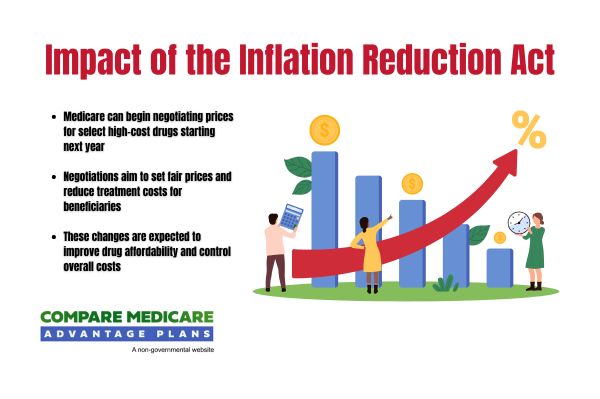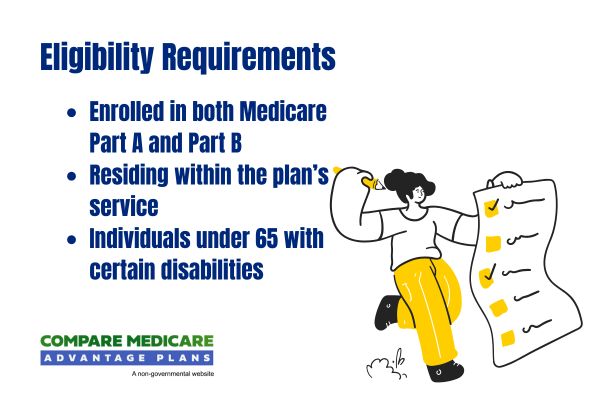Medicare Advantage PPO Plans Overview

Medicare Advantage PPO plans provide an alternative to traditional Medicare, offering beneficiaries a network of healthcare providers and greater flexibility in choosing services. Unlike traditional Medicare, which operates on a fee-for-service basis, Medicare Advantage PPO plans give members the freedom to see any doctor or specialist without needing a referral, although there are cost advantages to using in-network providers.
One of the key benefits of Medicare Advantage PPO plans is their comprehensive coverage. These plans are required to cover all services that Original Medicare covers, ensuring that enrollees receive the same essential healthcare services. This includes hospital care, outpatient services, and preventive care, making it a robust option for those looking for extensive healthcare coverage.
Medicare Advantage PPO plans frequently include additional benefits not typically covered under Original Medicare, such as vision, dental, and wellness programs. This added flexibility and range of services make PPO plans an attractive option for many beneficiaries.
Several updates and enhancements to these change plans are set to take place in the following year and subsequent years, which will be discussed in the next section.
Key Changes to Medicare Advantage PPO Plans in 2026
The landscape of Medicare Advantage PPO plans is set to evolve significantly in 2026, with several key changes on the horizon. One of the most notable updates is the projected increase in average payments to Medicare Advantage plans, which are expected to rise by 5.06% from 2025 to 2026. This increase reflects a stronger growth rate due to updated expenditure data, aiming to enhance the overall quality and sustainability of these plans.
The effective growth rate for Medicare Advantage plans has been updated to 9.04%, based on more comprehensive data than previous estimates. This adjustment is part of a broader effort by the Centers for Medicare & Medicaid Services (CMS) to ensure that Medicare Advantage plans accurately reflect the costs and needs of beneficiaries. Moreover, CMS is completing a three-year update to the risk adjustment model, which began in 2024, to better account for the health status and treatment costs of enrollees.
Another significant change is the automatic renewal of participants in the Medicare Prescription Payment Plan starting in 2026, unless they choose to submit opt-out requests. Certain supplemental benefits will be limited, excluding non-health-related items like tobacco and life insurance.
Finally, prior authorization processes will be tested in six states for traditional Medicare coverage, aligning with practices previously common in Medicare Advantage. These changes are designed to streamline the administration of benefits and improve the overall efficiency of Medicare services, as outlined in the proposed rule.
Enhanced Flexibility and Coverage Options
With the changes coming in 2026, Medicare Advantage PPO plans are set to offer even greater flexibility and coverage options. One of the most significant enhancements is the ability for beneficiaries to receive care from out-of-network providers, which provides more choices for healthcare services. This flexibility is particularly beneficial for those who may need specialized care that is not available within their network, such as:
- Receiving care from out-of-network providers
- Access to more choices for healthcare services
- Benefiting those needing specialized care unavailable within their network
In addition to expanded provider options, new delivery methods for over-the-counter items will be introduced, making it easier for members to access necessary health products. This change aims to improve the convenience and accessibility of essential healthcare items for beneficiaries, ensuring they have what they need when they need it.
Medicare Advantage plans will also offer enhanced home health services, including personal care assistance to support daily living needs. This is particularly important for beneficiaries who require additional support to maintain their independence at home through a medicare advantage plan.
Furthermore, certain plans will provide access to telehealth services, allowing beneficiaries to consult health care professionals remotely to protect beneficiaries. This option not only increases access to care but also adds a layer of convenience for those who may have difficulty traveling to in-person appointments.
Overall, these enhancements reflect CMS’s commitment to improving the flexibility and coverage options available to Medicare Advantage PPO plan members, as CMS noted, ensuring they receive the comprehensive care they need, with the changes now cms finalized.
Cost Considerations for Medicare Advantage PPO Plans
When considering Medicare Advantage PPO plans, it’s essential to evaluate the associated costs to make an informed decision. As of 2025, the average monthly premium for these plans is expected to be around $17, but this can vary significantly depending on the specific plan chosen. It’s crucial to review the premiums and out-of-pocket costs of different plans to find one that fits your budget.
Medicare Advantage plans often have varied deductibles, including the Part D deductible, so understanding each plan’s details is essential. Key points to note include:
- The maximum out-of-pocket limit for Medicare Advantage plans in 2025 is set at $9,350.
- Some plans may offer lower out-of-pocket limits.
- This out-of-pocket limit does not include costs associated with Part D coverage.
The out-of-pocket limit for prescription drugs under Medicare will increase to $2,100 in 2026, reflecting a $100 rise from the previous year. This increase underscores the importance of budgeting for healthcare costs annually, considering premiums, copays, and deductibles. Beneficiaries should carefully evaluate their expected healthcare needs and drug prices to choose a plan that offers the best value and coverage.
It is crucial to understand the differences in cost-sharing between Original Medicare and Medicare Advantage plans. While Original Medicare generally involves paying a percentage of costs after meeting deductibles, Medicare Advantage plans often have varying out-of-pocket costs and may include additional coverage, making them an attractive option for many beneficiaries.
New Benefits and Supplemental Services
Medicare Advantage PPO plans in 2026 will introduce several new benefits and supplemental services designed to enhance the overall value and coverage for beneficiaries. One notable addition is expanded dental coverage, which will now include preventive, basic, and major services. This comprehensive dental coverage ensures that beneficiaries have access to essential dental care, which is often not covered under Original Medicare.
Vision benefits under the 2026 Medicare Advantage PPO plans will also be significantly enhanced. These benefits will cover routine eye exams and eyewear, helping beneficiaries maintain their eye health and address any vision-related issues promptly. This added coverage is particularly valuable for older adults, who may experience more frequent vision changes and eye health concerns.
Wellness programs are another exciting addition to Medicare Advantage PPO plans in 2026. These programs will feature services such as fitness memberships and health coaching, which are aimed at promoting preventive health measures and encouraging healthy lifestyles among beneficiaries. By participating in these wellness programs, beneficiaries can take proactive steps to improve their overall health and well-being.
The eligibility criteria for supplemental benefits aimed at individuals who are chronically ill will be updated, increasing support options for those who need them most. This change reflects a commitment to providing comprehensive care for all beneficiaries, particularly those with ongoing health challenges. Considering these additional benefits can significantly enhance the overall value of a Medicare Advantage PPO plan and provide more comprehensive coverage than Original Medicare alone.
Impact of the Inflation Reduction Act on Medicare Advantage PPO Plans

The Inflation Reduction Act has introduced several measures that will impact Medicare Advantage PPO plans, particularly in terms of managing prescription drug costs. Starting in 2025, Medicare Part D will feature a cap on annual out-of-pocket expenses for prescription drugs, set at $2,000. This cap is designed to provide financial relief to beneficiaries, ensuring that they are not burdened with excessive prescription drug costs.
The Act also introduces a payment plan option that allows Medicare beneficiaries to manage their prescription drug costs through a drug plan with monthly payments rather than upfront costs, enhancing payment accuracy. This option provides greater flexibility and financial predictability for those who rely on prescription medications regularly.
The Inflation Reduction Act replaces the Coverage Gap Discount Program with a Manufacturer Discount Program, altering how discounts for brand-name drugs are managed. This change aims to streamline the process and potentially reduce overall drug costs for beneficiaries.
Staying informed about these changes, as well as other updates from the Inflation Reduction Act, is crucial for effectively managing healthcare expenses and maximizing the benefits of Medicare Advantage plans.













